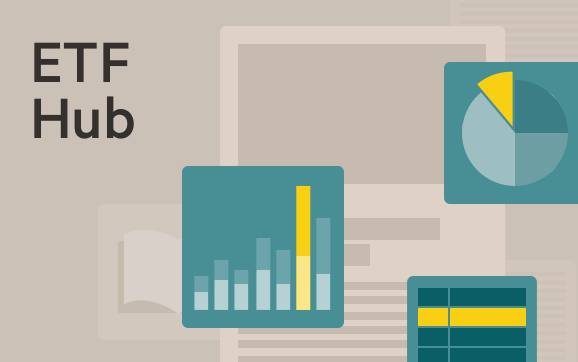Receive free Exchange traded funds updates
We’ll send you a myFT Daily Digest email rounding up the latest Exchange traded funds news every morning.
Latest news on ETFs
Visit our ETF Hub to find out more and to explore our in-depth data and comparison tools
JPMorgan Asset Management has revamped a smart beta exchange traded fund into an actively managed product, with experts suggesting more firms will follow suit.
Shareholders recently approved the transition of the $170mn JPMorgan Global High Yield Corporate Bond Multi-Factor Ucits ETF into an active strategy, with the changes expected to take effect before the end of August. The fund is part of the firm’s Ireland-domiciled Icav ETF range.
Industry experts approached by Ignites Europe were not able to provide examples of another Europe-domiciled ETF that had made a similar switch.
The JPMorgan ETF had employed a smart beta strategy, meaning it used a rules-based passive strategy to select securities from the ICE BofAML Global High Yield Index with value, momentum and quality characteristics.

This article was previously published by Ignites Europe, a title owned by the FT Group.
Rising demand for active ETFs could prompt more asset managers to switch products away from passive and smart beta investment policies, experts say.
The smart beta ETF market “hasn’t been easily understood” and “has been stagnant for some years now”, said Jose Garcia Zarate, associate director of passive strategies manager research at Morningstar.
It could therefore be an avenue for more switches in strategy to an active approach, Garcia Zarate said.
Smart beta ETF assets domiciled in Europe have fallen 1 per cent over the past year, from $102.3bn in July 2022 to $101.2bn in July 2023, according to Morningstar data. Active ETF assets have grown 33 per cent over the same period, from $27bn to $36bn.
The majority of smart beta inflows have been into high-income equity products, says Deborah Fuhr, founder of ETFGI, an ETF research firm.
Fixed income products are not very common in smart beta, she said.
Repurposing an ETF strategy can make sense if it has assets greater than $50mn, said Hector McNeil, founder and co-chief executive officer of HanETF.
Some asset managers may be able to “reinvigorate” smart beta ETFs via a switch to an active investment approach, McNeil said.
Thematic ETFs may be another area where asset managers may look to switch from passive to active, he added.
JPMorgan declined to comment on the change in investment policy.
In the US, firms including Principal Global Investors, WisdomTree and Franklin Templeton have converted passive ETFs to active strategies over recent years.
Some asset managers switch from passive to active with the intention of still tracking the benchmark, albeit with less constraints, said Fuhr.
Such ETFs have more flexibility to hold an alternative security if there are liquidity issues with an index constituent, for example, she added.
Active ETFs are not that common in Europe but are a growing part of the ETF market, said independent ETF and index consultant Nizam Hamid.
There are just 360 active ETFs domiciled in Europe compared with 2,302 passive ETFs, according to Morningstar data. Active ETFs represent just 0.27 per cent of assets across ETFs and open-ended funds, the data shows.
Hamid expected further active ETF growth to come from asset managers launching ETF share classes for their mutual fund ranges.
JPMorgan is predominantly an active house so it makes sense for them to “play to their strengths”, said McNeil.
The asset manager is probably “emboldened” by the success of active ETFs in the US, of which it has been a big part, he added.
Latest news on ETFs

Visit the ETF Hub to find out more and to explore our in-depth data and comparison tools helping you to understand everything from performance to ESG ratings
Since August 2022, active ETF assets have surpassed passive in JPMorgan’s US range and now sit at $67.5bn, according to Morningstar data. Passive ETFs account for $53.3bn, as of July.
In Europe, JPMorgan’s ETF range includes $10bn in active strategies compared to $4.9bn in passive strategies, Morningstar data shows.
Concerns over transparency in the past deterred some asset managers from launching active products as ETFs because they were concerned about front running or giving away their “secret sauce”, said Fuhr.
But she pointed out that both Capital Group and Dimensional had recently launched fully transparent, active ETFs in the US, despite the jurisdiction now allowing semi- or non-transparent ETFs.
Ignites Europe is a news service published by FT Specialist for professionals working in the asset management industry. Trials and subscriptions are available at igniteseurope.com.


Comments are closed, but trackbacks and pingbacks are open.